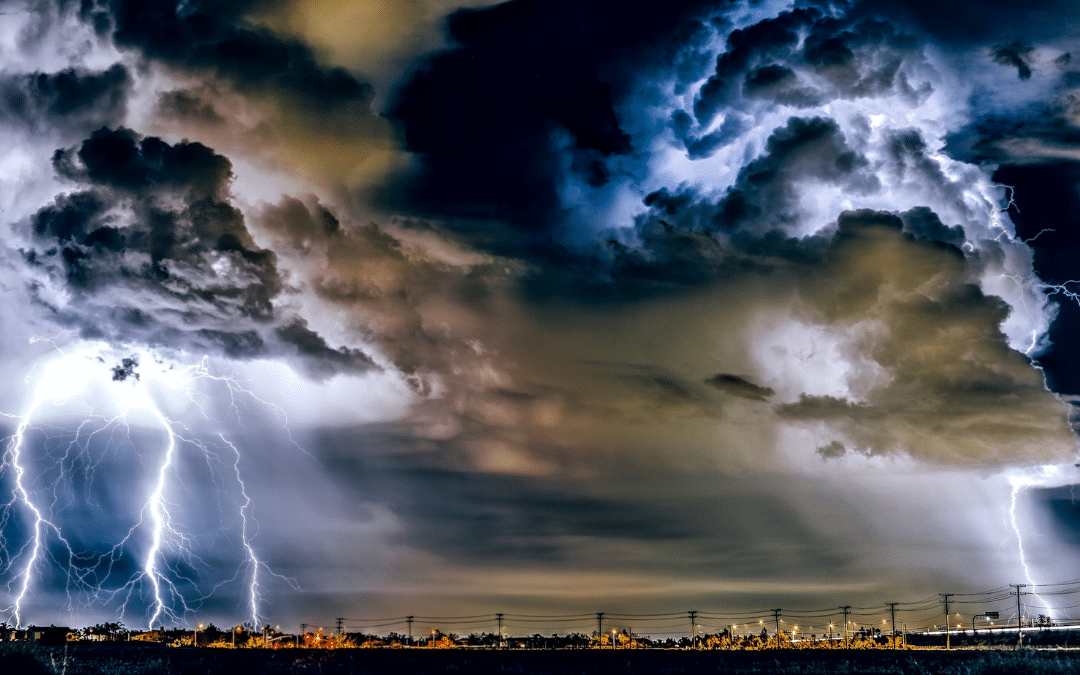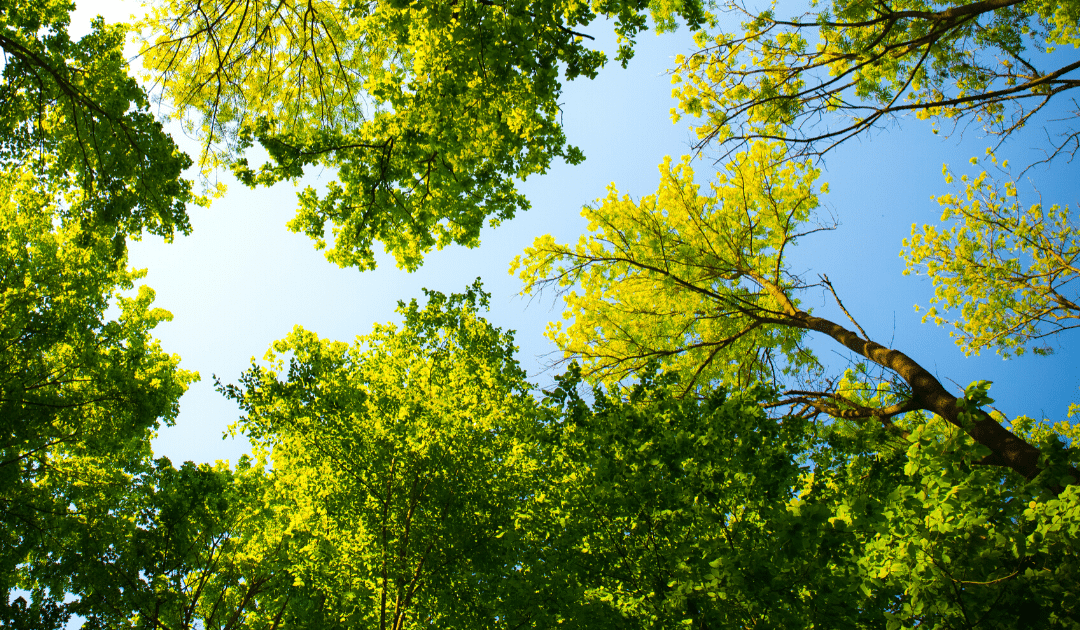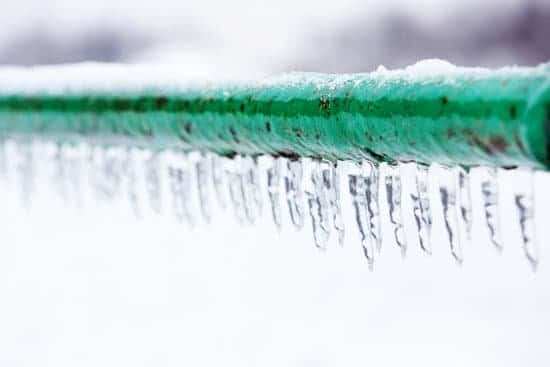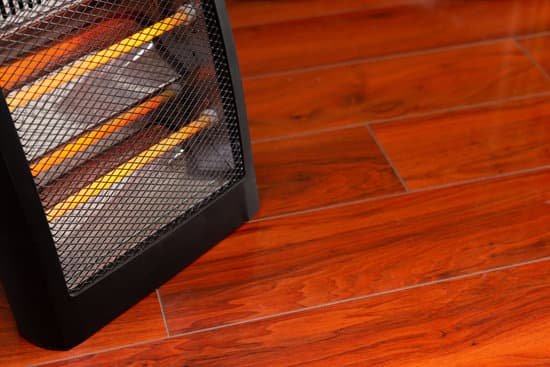
by California Casualty | Homeowners Insurance Info, Safety |
Unpredictable weather is a trademark of spring: 73° and deliciously sunny one day, 41°, and sideways rain the next.
Fluctuating weather during this time of year also plays a major factor in the development of severe spring storms. However, with the right preparation, you can be sure that your home and family are ready to withstand the worst of it.
Follow these preparation tips to be sure you are spring storm-ready.
Be Weather Aware — You can sign up for a number of free weather alert services provided by national or local agencies, weather channels, and power companies. Usually, alerts come to your phone via text message or app, but many have multiple delivery methods. And remember, radio is the old standby, especially in a power outage (so set your emergency radio to the correct station ahead of time).
Trim the Trees — Trim low-hanging limbs, as well as any branches hanging near your home or power lines that could snap off in high winds and cause damage.
Free Your Gutters — Remove leaves and other debris from gutters, drains, and downspouts (best done each spring and fall). This ensures that any deluge of rainwater is quickly diverted away from your home and foundation rather than potentially flooding it. Take the opportunity to check gutters for leaks, damage, and sagging; also make sure they’re securely attached.
Check the Sump Pump — If you haven’t had to deal with a flooded basement, thanks are due to your hardworking sump pump. To keep it in good working order, test it a few times a year, including before spring storms. Clear any debris and make sure it’s working and draining properly. Consider adding a battery-powered back-up pump, or a standby generator, in case of power outages.
Get Ahead of Leaks — Leaks are sneaky … and can cause damage quickly. If you’ve had any leaks in the past, now’s the time to seal them up—before the big rains start. Also do a preventive check on your doors’ and windows’ sealing (inside and outside), as well as in the garage and basement, then fix any gaps or cracks.
Secure Items — By the time the wind is bending trees, it’s too late to worry about securing items in your yard. As soon as storms are forecast, bring items like patio furniture into the garage (or secure them in place outside). Anything that can become a projectile should be moved inside. Also close and secure shutters around your home. Drawing interior blinds and shades provide yet another layer of protection against flying debris and broken glass.
Get Your Plans in Place — When the storms roll in, you’ll be glad you made plans ahead of time.
-
- Storm Safety Plan — Create a safety plan with your family, and make sure everyone understands it and is on board. This would cover things like shelter-in-place locations in the home, evacuation routes, communication protocols if you’re separated, and a plan for your pets.
- Emergency Kit — Regularly check your kit and add, replace or discard items as needed. See our checklist here for a full emergency kit inventory. At the very least, prepare the following for storms: first aid supplies, flashlights with new batteries, two gallons of water per person, a hand-crank or battery-powered radio, a three-day supply of non-perishable food for your family and pets, and a two-month supply of any necessary medications.
- Be Ready for a Power Outage — Are you ready for a few days of no power? Charge all phones and electronic devices ahead of time. Make sure your generator is operational and ready to go. Fill your car’s gas tank (and some cans for your generator). For more tips, check out our power outage safety hacks. Finally, remember to use surge protectors when the power is being restored.
As the saying goes, “An ounce of prevention is worth a pound of cure.” When it comes to safeguarding your home, the steps above can go a long way toward preventing costly damage, headache, and hassle. And there’s no time like the present to start!
This article is furnished by California Casualty, providing auto and home insurance to educators, law enforcement officers, firefighters, and nurses. Get a quote at 1.866.704.8614 or www.calcas.com.

by California Casualty | Homeowners Insurance Info |
The first Arbor Day in America took place April 10, 1872 in Nebraska City, Nebraska, when a proposed “tree-planting holiday” saw an estimated one million trees planted in the state in one day. Almost 150 years later, our love of trees remains strong as ever—they give us beauty, comfort, shade, protection, and a living expression of the seasons.
However, the benefits of living with trees also come with risk, especially for home-owners. Falling trees or branches can damage your home or even injure people. They can fall on power lines, leading to outages or fires, and their roots can damage pipes, foundations, and utility infrastructure. If a tree grows on your property, you are legally responsible for damage or injuries caused by it.
Since it’s difficult to tell when a tree might fail, here are 7 signs that could indicate bad tree health and a hazardous situation in the making.
How to Spot Tree Health Trouble Signs:
1. Leaning Trees. A little lean is normal, as most trees don’t grow straight, but if you see cracked or buckling soil—especially on the opposite side of the lean—that’s an indicator of stress. Another sign is exposed roots around the tree’s base.
2. Multiple Trunks. A tree with multiple trunks can break if the trunks are weakly attached. Check for cracks and splits where the trunks meet.
3. Dead Branches. As a normal part of their growth cycle, trees will shed dead branches, called deadwood. Most will eventually fall but keep an eye out for branches with a diameter of 2 inches or more—these are more likely to cause damage when they fall.
4. Fungi or Mushrooms. Fungi growing on the tree’s base or roots signals decay. These organisms feed off the tree’s internal cells, compromising its structural integrity.
5. Cracks. Large cracks in a tree’s trunk or branches require immediate attention. Most worrying is horizontal cracks in the trunk; however, any significant crack is a sign that the wood is weak or has already begun to fail and it’s only a matter of time before it snaps.
6. Cavities. Although not always the case, tree cavities can signal internal decay. Check for peeling bark and hollow or decayed areas, especially where branches meet the trunk. If you notice ants, birds, squirrels, bees, or raccoons spending a lot of time on trees that don’t provide food, it may also be a sign that there’s an internal void.
7. V-Shaped Branches. Look at where branches attach to the trunk: those unions should look more like the letter U than V. Tight V-shaped forks are more prone to break than the more open U-shaped ones.
When To Call an Arborist
Some of the above hazards can be addressed relatively easily. For instance, you can prune branches and use cabling to stabilize a small or medium-sized tree that’s leaning. However, if you notice serious hazards or are dealing with especially large or old trees, it’s safest to contact a certified arborist.
This article is furnished by California Casualty, providing auto and home insurance to educators, law enforcement officers, firefighters, and nurses. Get a quote at 1.866.704.8614 or www.calcas.com.

by California Casualty | Homeowners Insurance Info |
February is the month of love. If you choose to show your love with an expensive piece of jewelry, you’ll want to protect that enduring representation of your love.
One of the best ways is to purchase scheduled personal property (SPP) insurance, sometimes called a floater.
Here’s why: While your renters or homeowners’ insurance policy covers jewelry for theft or being destroyed in a fire, that coverage is limited. The average Valentine’s Day ring or necklace purchase is about $1,500, the average spend for an engagement ring is $6,000.
Scheduled personal property insurance provides higher coverage for your precious items, like high priced jewelry with coverage above and beyond what home insurance provides.
And, here’s the best part, SPP pays even if that prized piece was accidentally lost or damaged – such as losing a diamond down the sink or toilet. There is no deductible and SPP provides a replacement at the full insured amount. SPP usually costs about one to two percent of the item’s value.
Scheduled personal property isn’t just for jewelry; you might need the endorsement if you have:
- Fine art
- Furs
- Rare coins or money collections
- Expensive cameras
- Firearms
- Fine silverware
- Stamp collections
And even if you already have gold and jewelry or a rare watch covered with scheduled personal property coverage, you may need a review. Gold and diamond prices have climbed the past few years, and you may not have enough protection for their new value.
Don’t wait until your precious items are lost, stolen or damaged to find out if you have enough coverage to replace them; contact a representative today.
This article is furnished by California Casualty, providing auto and home insurance to educators, law enforcement officers, firefighters and nurses. Get a quote at 1.866.704.8614 or www.calcas.com.

by California Casualty | Homeowners Insurance Info, Safety |
Don’t spend your time worrying about an accident on Super Bowl Sunday, follow these party hosting safety tips and set your focus on the big game (and the commercials).
Party Hosting Safety Tips
Be a Good Neighbor
Just in case things get a little loud, let your neighbors know that you plan on hosting a Super Bowl party. As a courtesy let guests know where to park, so they do not block any driveways, and keep the party indoors or in a fenced-in yard.
Keep Your Pets Safe
Bring pets indoors and lock them in a separate room, far away from the commotion, with a TV or noise machine on. This will not only help them feel less anxious, but it will also give you peace of mind that they are safe and can’t run away.
Check the Food
Make sure your guests do not have any food allergies before you start prepping your meal. As you are cooking, remember to keep raw meats away from other food items and to always wash your hands between dishes.
Lock Up Valuables
Before inviting guests into your home make sure that you have all jewelry, cash, and other expensive items locked safely away and out of sight.
Monitor Alcohol Consumption
Have guests who plan on drinking use Uber or another rideshare service, and make sure to have a set cutoff time at least an hour before the party is over.
Make Sure You are Covered
Let’s face it, accidents happen; especially when you have a rowdy crowd on your hands. Make sure you are covered by your homeowner’s or renter’s insurance policy. If you are unsure, give your California Casualty advisor a call today.
The Proper Coverage for You
If something in your home gets broken or stolen while you have people over, your policy will cover it. But, if you have high-value items like jewelry, antiques, collectibles, or furs, you will need to add extra coverage – scheduled personal property.
If you are serving alcohol, be aware, that hosts can be liable if others are hurt by anyone driving from your party while intoxicated. It’s called the social host liability law. Personal liability coverage will also help in this situation by covering payments of medical bills and lawsuits from someone who was hurt on or off (leaving) your property. However, there are limits, so talk to your insurance advisor about an umbrella policy, for greater coverage.
Other Hosting Safety Tips
Here are some other important safety tips to keep in mind when hosting a party or get together.
-Hire a babysitter for young children
-Get approval from your Homeowner’s Association
-Install proper lighting inside and outside of your home and remove items that could cause someone to trip and fall
-Consider holding your getting together at a restaurant or bar, so you won’t be liable
This article is furnished by California Casualty, providing auto and home insurance to educators, law enforcement officers, firefighters, and nurses. Get a quote at 1.866.704.8614 or www.calcas.com.

by California Casualty | Homeowners Insurance Info |
The plumbing in your home could be in danger when temperatures dip below zero, and the last thing you want to deal with when it thaws is a burst pipe, which can lead to substantial damage in your home.
All that water can eat through drywall, destroy carpets and fry electronics. The Federal Emergency Management Agency estimates that just two inches of water can cause more than $10,000 in repairs and replacement of flooded items. Six inches of water can add up to more than $30,000!
Before the thermometer plunges, here are things you can do to prevent pipes from freezing:
- Disconnect outside hoses from faucets
- Insulate water pipes, especially along exterior walls and unheated areas
- Add insulation to walls and attics where pipes may run
- Know where the shutoff valve is to your home
Once the sub-zero weather hits you should:
- Let faucets drip to prevent freezing
- Keep the thermostat above 55 degrees
- Make sure garage doors are closed
- Open kitchen and bathroom cabinets to allow warm air to circulate around the plumbing
So you’ve prepared and kept as much heat as possible going to cold areas, but the cold air still froze a pipe; what now? Stay calm but act as quickly as possible to:
- Locate where the pipe is frozen
- Open the nearest faucet to relieve pressure when the ice thaws
- Slowly warm the pipe with a heating pad, hairdryer, space heater or wrapping it with hot towels – never use a blow torch or open flame
If the pipe has cracked or broken, immediately turn off water at the main water valve and call a plumber. Shutting off the water will prevent further damage.
And if you have damage from a broken water pipe:
- Try to prevent further damage
- Contact your insurance company as soon as possible
- Take photos or video of the damage
- Don’t make permanent repairs until the insurance company adjuster inspects the damage
- Keep all of your receipts for emergency repair work or temporary housing if you are forced out of your home or apartment
Once a pipe freezes, odds are it will happen again. Here are some tips to prevent it in the future:
- Hire a plumber to relocate to a warmer area
- Add more insulation in walls, attics and crawl spaces
- Wrap the pipe with electric heat tape, when temperatures drop, plug it in
Remember, if a burst pipe sends water into your home, contact a California Casualty Claims advisor as soon as possible; we can help get you started on the clean-up.
For more information visit:
https://bit.ly/30Q8dvP
https://bit.ly/36nEewu
https://rdcrss.org/2vmD9bp
https://bit.ly/3aG6xJW
https://bit.ly/2vnJ9Rj
This article is furnished by California Casualty, providing auto and home insurance to educators, law enforcement officers, firefighters, and nurses. Get a quote at 1.866.704.8614 or www.calcas.com.

by California Casualty | Homeowners Insurance Info, Safety |
Winter is officially in full swing, and that means many of us will start to get out the portable heaters to combat those brisk nights and chilly mornings- that is, of course if you haven’t done that already. space heater
Used properly, portable heaters are a godsend, but it’s extremely important to pay attention to the possible dangers associated with that trusty little plug-in heater.
Portable heaters are responsible for an estimated 25,000+ home fires each year, causing terrible burns to thousands of people. Imagine how you’d feel if not paying attention to a simple appliance caused the destruction of your home or hurt your family.
That’s why you should follow these Space Heater Safety Tips
- Never use an unvented combustion heater indoors (safety experts recommend electric heaters instead)
- Only purchase or use newer models that have current safety features and the Underwriter Laboratory (UL) label
- Keep the heater on a hard, level, non-flammable surface such as ceramic tile
- Make sure the heater is at least three feet away from flammables like bedding, drapes, furniture, and papers
- Keep pets and children away from space heaters
- Always turn the heater off when you leave the area
- Never leave a space heater on when you go to sleep
- Check to see if it has a tip-over safety switch that will automatically turn it off if it falls over
- Avoid using extension cords and never run the cord under carpeting or mats
Pro Tip: these safety tips also apply when turning on the heat for the entire house. If you haven’t already, the National Fire Protection Association recommends us to have our heating system, or chimney, checked and serviced each year by a qualified heating and cooling professional to make sure it’s fire safe and there are no carbon monoxide leaks. It is also recommended to change the batteries in your smoke and carbon monoxide detectors during this time.
For more information visit:
https://bit.ly/390CA6s
https://bit.ly/2ZjPoR3
https://bit.ly/35HY0mT
https://bit.ly/2Q4ZLnh
https://bit.ly/2Z7D1Ho
Related Articles:
Fire Prevention Tips for the Holidays
Holiday Light Safety
The 6 Most At-Risk Fire Areas of Your Home
This article is furnished by California Casualty, providing auto and home insurance to educators, law enforcement officers, firefighters, and nurses. Get a quote at 1.866.704.8614 or visit www.calcas.com.






